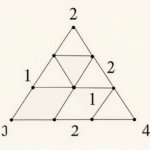Cyclical Indicators Signal Economic Weakness and Potential Recession
The Mexican economy continues to exhibit signs of weakness, as reported by the National Institute of Statistics and Geography (Inegi) through its Cyclical Indicators. The Indicator Coincidente, which reflects the overall state of the economy, has remained below its long-term trend for six consecutive months, reaching 99.6 points in March—its lowest level since December 2021.
Historical Context and Expert Analysis
Gabriela Siller, Director of Economic and Financial Analysis at Banco Base, noted that this is the longest stretch of months below the long-term trend since September 2018 to May 2020, when the indicator fell for 21 consecutive months. Siller confirmed that, under this methodology, the economy is in a recessionary phase of the economic cycle.
Component Analysis
Of the Indicator Coincidente’s six components, four reported declines in March: the Industrial Activity Indicator fell by 0.09 points, Permanent Workers in the IMSS decreased by 0.07 points, the Global Economic Activity Indicator dropped by 0.05 points, and Total Imports declined by 0.01 points.
However, the Urban Unemployment Rate improved by 0.11 points and the Index of Income from the Supply of Goods and Services at Retail increased by 0.03 points.
Continued Weakness and Recession Concerns
The Indicator Adelantado, which aims to forecast the turning points of the Coincidente, also fell below its long-term trend in April to 99.5 points—its lowest level since October 2020. With 12 consecutive months of decline, the Indicator Adelantado suggests that the recessionary phase of the economic cycle will persist in the coming months.
Four out of six components of the Indicator Adelantado also experienced declines, including a 0.22-point drop in the Tasa de Interés component.
Diverse Economic Projections
This year, there has been debate over whether Mexico’s economy will enter a recession due to an observed slowdown since the end of the previous year. Despite a 0.2% trimestral advance in real GDP between January and March, which avoided a “technical recession,” various institutions warn of potential economic contraction due to international uncertainty, particularly from the U.S. trade policy decisions.
While the World Bank predicts zero growth for 2023, the International Monetary Fund forecasts a 0.3% contraction. The OECD anticipates a 0.4% GDP growth. Meanwhile, the government of Claudia Sheinbaum expects a 1.5% to 2.3% growth rate for Mexico this year, which has been deemed overly optimistic given the current situation.
Key Questions and Answers
- What are cyclical indicators? Cyclical indicators are economic measures that track the ups and downs of business cycles, helping to identify periods of expansion and contraction.
- Why is the Indicator Coincidente important? The Indicator Coincidente reflects the overall state of the economy, providing insights into its current performance relative to its long-term trend.
- What does it mean when indicators are below their long-term trend? When cyclical indicators consistently fall below their long-term trend, it suggests that the economy is weakening and may be entering a recessionary phase.
- How do international factors impact the Mexican economy? International uncertainty, such as trade policy decisions by major economies like the U.S., can create challenges for Mexico’s export-oriented economy, potentially leading to slower growth or even contraction.
- What are the varying economic growth projections for Mexico in 2023? Institutions like the World Bank, IMF, and OECD have projected different growth rates for Mexico in 2023, ranging from no growth to a contraction, while the Mexican government remains optimistic about a 1.5% to 2.3% growth rate.






